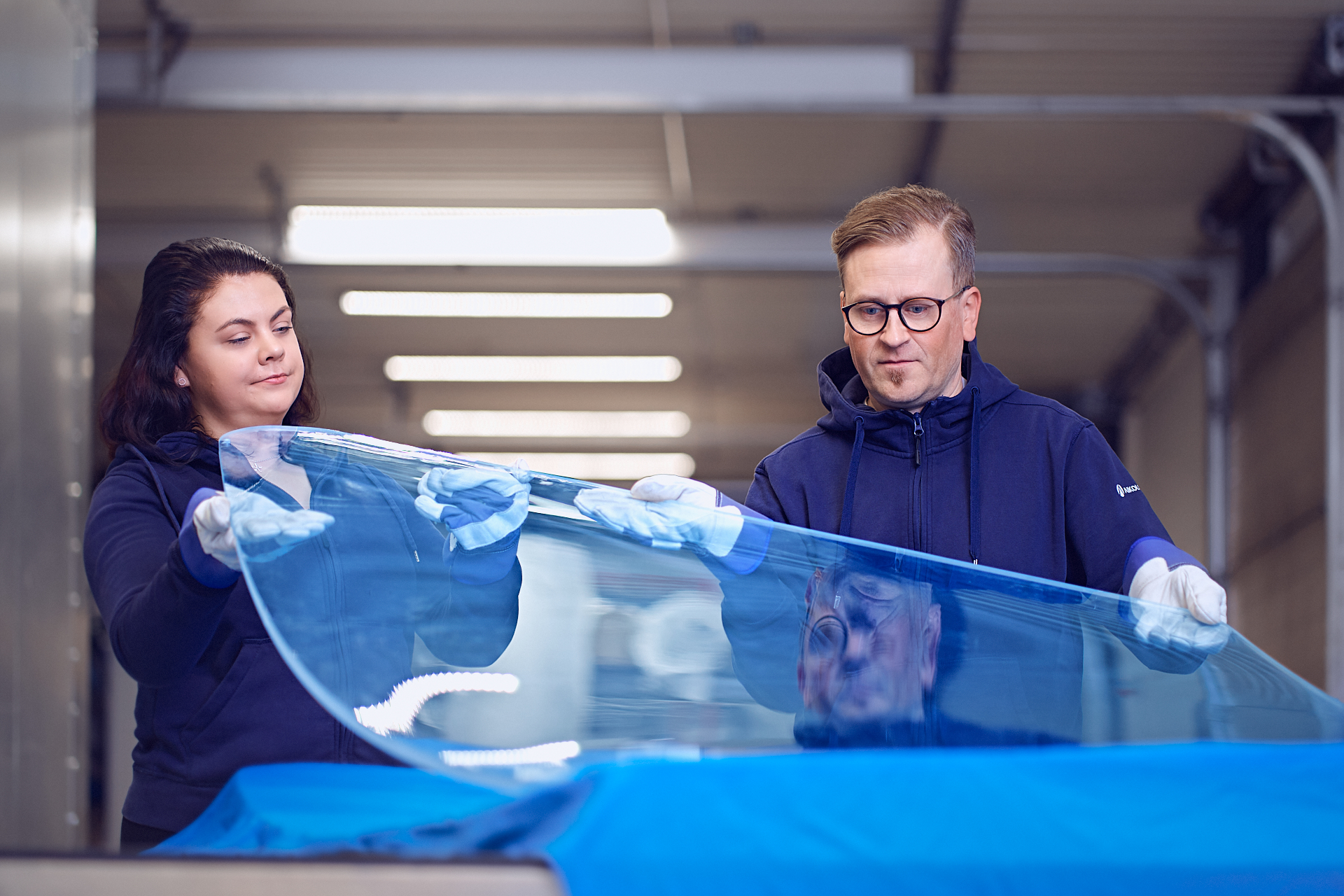Polycarbonate (PC) has recently gained popularity as a glazing material. The choice between polycarbonate and tempered glass for industrial applications depends on various factors and the application’s specific requirements. The requirements can be related e.g. to durability, transparency, chemical resistance, temperature resistance, and cost. Let’s go through these requirements from the perspective of material properties.
1. Durability
Polycarbonate is known for its exceptional impact resistance, making it highly suitable for applications at risk of breakage or high-impact forces. Glass, on the other hand, is more brittle and susceptible to shattering under certain conditions. Even though tempered glass is more resistant to impacts, its impact resistance is nowhere near polycarbonate. Polycarbonate sheet is 200 times more impact-resistant than traditional glass.
Therefore, polycarbonate is the better solution if the application involves potential impacts or requires high durability. For example, safety glazing for forestry machines is manufactured from hard-coated polycarbonate, Aikon® PC AR 2021 to ensure the operator's safety in extreme conditions. In addition, for transparent noise barriers, we recommend Aikon® PC AR 1020 as the material has great performance even if it faces vandalism.
2. Density
Polycarbonate is an extremely lightweight material compared to tempered glass. Its density is 1,20 g/cm3. Traditional glass weighs approximately twice as much as polycarbonate sheets; its density is 2,5 g/cm3.
Material weight significantly impacts the total carbon footprint of vehicles or machines. Therefore, if your target is to lower your carbon footprint, choosing an energy-efficient material with a low density such as polycarbonate is best. In addition, large lightweight components are easier to handle and assemble.
3. Light transmission
Glass typically offers slightly better optical properties compared to polycarbonate. However, the difference between the materials is not that significant. The minimum light transmission of glass is 88 % whereas the light transmission of polycarbonate is 87 %.
4. Temperature resistance
The highest possible operating temperature of the glass is 200 °C and with tempered glass, it is even higher (up to 250 °C). This is significantly higher compared to polycarbonate (120 °C).
The glass transition temperature of the polycarbonate sheet is 148 °C, meaning the material softens gradually above this point. If the application requires higher temperature resistance tempered glass is a better choice. However, glass is a poor thermal conductor and rapid temperature changes may create stress fractures in the glass that may eventually crack. On the other hand, polycarbonate has good temperature resistance to cold temperatures. The minimum temperature for polycarbonate is -50 °C.
5. Chemical resistance
Glass has significantly better chemical resistance compared to plastics in general. Without a coating agent polycarbonate doesn’t withstand strong acids, and weak alkaline substances can cloud its surface. With hard-coated polycarbonate sheets, the coating agents improve the materials’ chemical resistance making it suitable for applications that require decent chemical resistance. However, hard-coated polycarbonate should be cleaned according to the correct cleaning instructions to maintain its good properties.
In general hard coating improves significantly the properties of polycarbonate making it a long-lasting solution. If you are looking for a transparent material with excellent impact resistance, low weight, and high light transmission, polycarbonate is the right choice for your application.
Download Aikon® product brochure and learn more
For more information on hard-coated Aikon® polycarbonate sheets, download our product brochure. The brochure introduces the benefits and applications of transparent high-quality polycarbonate and acrylic sheets.
Read more
